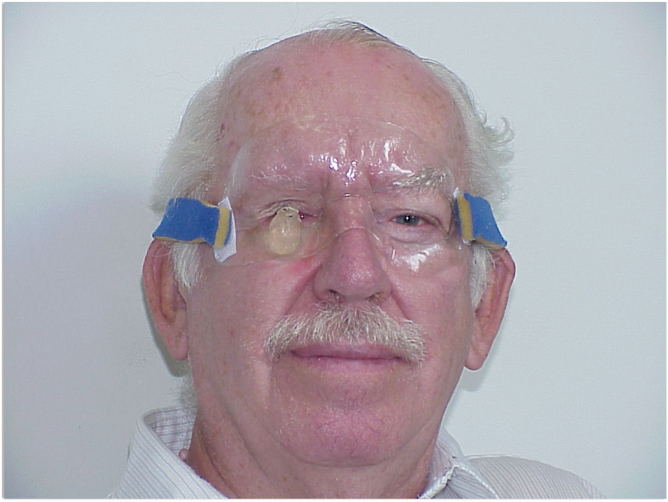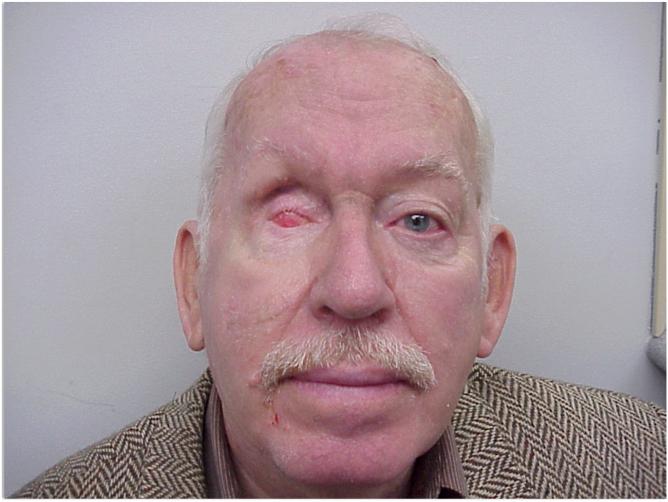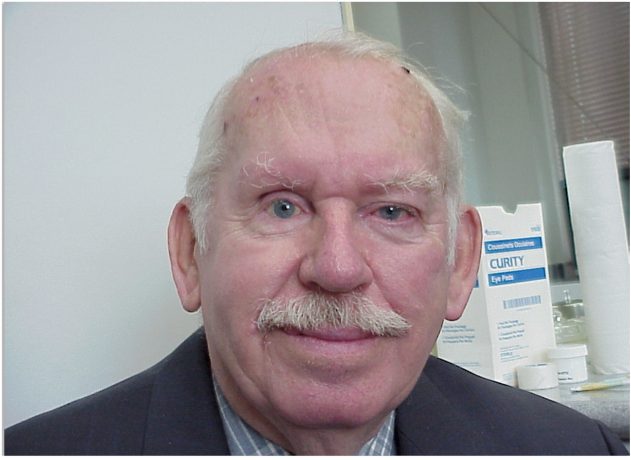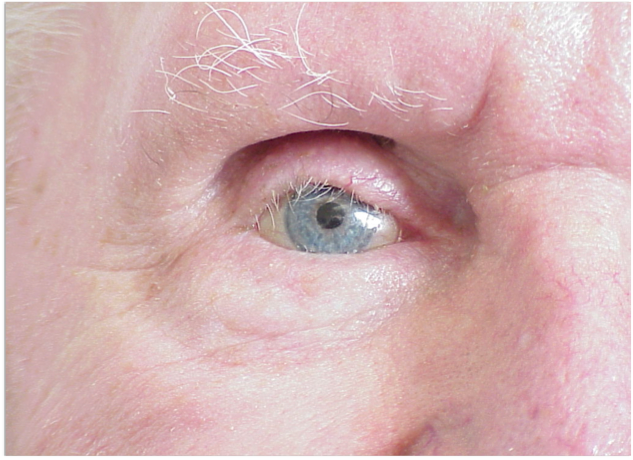News
Article
Successful contracted socket rehabilitation
The best steps to take to guarantee contracted sockets are rehabilitated the first time around.
Toronto-The ocularist has various tools available for managing the contracted anophthalmic socket, but success in these difficult cases ultimately requires a team effort, according to Michael C. Webb, BCO.

Patient wearing a LaFuente pressure mask (images courtesy of Michael C. Webb, BCO).
“It is important to identify a realistic goal, develop a plan for achieving it, and have an open line of communication between the surgeon, the ophthalmologist, the patient, and the ocularist,” said Webb, Mount Sinai Hospital, Toronto, Ontario, and private practice, Webb Ocular Prosthetics Toronto. “Ultimately, we would like to use the proper tools from the start so that the patient will not need to return for repair in the future.”
Talking the same language
Successful communication among the professionals managing the case is enabled when everybody is on the same page with respect to understanding the anatomy of the socket.
More in this issue: Guide to scleritis diagnosis and treatment success
Use of a classification system for describing the socket characteristics facilitates that process. The system divides sockets into 6 grades, from 0 to 5, with 0 indicating a socket with no complications and grade 5 referring to a socket with loss of fornices that has undergone reconstructive surgery within the past year.
The latter timeframe is important, Webb said, because it represents a period during which contraction forces are greatest
“I refer to these as ‘active sockets’ and their management requires a different understanding and unique elements,” he commented.

Close-up of socket showing no inferior fornix.
Webb identified the pressure conformer (Scott/Kelley) and the Lafuente pressure mask as the best tools to use in a contracted socket to maintain the fornices after surgery.
The pressure conformer is usually taped in the socket under pressure at nighttime for the first 48 hours postoperatively. The LaFuente pressure mask is able to create and maintain a stable base for the prosthesis. The mask is custom fit and molded to the individual’s face and fits with a custom designed conformer that goes within the socket.
In case you missed it: Tips for treating pediatric atopic keratoconjunctivitis
The benefits of the Lafuente pressure mask are that it affords greater accuracy in terms of focusing the pressure and as in orthodontics, its design allows for compensating pressure adaptive to fluctuating cicatricial contraction. As another advantage, the Lafuente pressure mask works fairly rapidly to create the fornices.
“I have had patients present with the inability to maintain a prosthesis who become able to do so within an hour of wearing the mask,”Webb said. “Then I can move them along the therapeutic expansion process to stabilize the socket.”

Socket after wearing the LaFuente pressure mask.
However, Webb emphasized that proper expertise is needed to use the Lafuente pressure mask.
“I am a firm believer that it requires a board certified ocularist to manage these devices,” he said.
The Lafuente pressure mask is not suitable for everyday wear, Webb stressed. Instead, patients are usually instructed to start using it for about 1 hour each day after surgery. They are slowly weaned off the mask, first decreasing the frequency of wear to every other day, 2 times a week, and then just once a week.
Webb also discussed socket reconstruction with a custom design conformer. Here, the ocularist works with the patient and the ophthalmologist to try to identify a configurative size that will be viable and usually supplies thre progressively sized custom made devices (S,M,L) available to the surgeon at the time of surgery.

Finished result.
The conformer is then sutured in position, anchored by passing the sutures through the periosteum, and left in place for about 6 to 8 weeks. Then, the sutures are removed with the intention that the freed conformer will be left in the socket for another few weeks.
Thereafter, therapeutic expansion of the socket begins with the ocularist manufacturing a custom designed conformer to replace the surgical conformer post-operatively.
Patient participation
Patient input is important for decisions on managing the contracted socket, as the correction should take into account individual needs and desires. However, the patient continues to play an active role and represents the first line of defense in avoiding adverse sequelae from contraction that remains a dynamic process over time.
Webb illustrated this point by describing a patient with a radiated socket who presented to him after several unsuccessful reconstruction attempts. The patient was fitted with a Lafuente pressure mask with a conformer, and after about 8 weeks, with a prosthesis that he could retain.
Over the ensuing years, the patient noted his prosthesis would start to loosen every 4 to 5 months. However, upon noticing the change, the patient would begin wearing his mask to re-establish the fornices and stabilize the socket.

Close-up showing finished result. "If instead this patient would have waited each time to be evaluated by the ocularist or ophthalmologist before starting to wear the mask again, it is likely that at some point, the fornices would have been lost by the time he was able to get into the office,” Webb said. “Then, more reconstructive surgery would have been his only option.”
Michael C. Webb, BCO
E: webbocular@msn.com
This article was adapted from Webb’s presentation of the Ruedemann Lecture at the 2014 meeting of the American Academy of Ophthalmology. Webb has no relevant financial interests to disclose.
Newsletter
Don’t miss out—get Ophthalmology Times updates on the latest clinical advancements and expert interviews, straight to your inbox.




